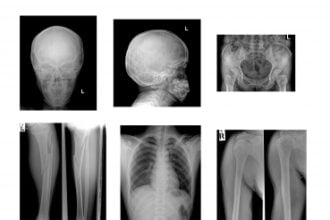I enjoyed reading Anthony Brino’s surmise of US Health Information Exchange status in today’s issue of HealthITNews. As editor for HIEWatch and associate editor for Healthcare Payor News and Government Health IT, Mr. Brino is well positioned to have his pulse on HIE activity around the country.
I enjoyed reading Anthony Brino’s surmise of US Health Information Exchange status in today’s issue of HealthITNews. As editor for HIEWatch and associate editor for Healthcare Payor News and Government Health IT, Mr. Brino is well positioned to have his pulse on HIE activity around the country. His article, ‘Jury still out’ on HIE sustainability, does a fine job of surveying the landscape. It also confirms what I’ve been evangelizing for some time, most recently in my HealthBlog post of April 3rd, Cracking the code on Health Information Exchange: Is it time to wipe the slate clean and start anew?
For me, the word sustainability in Mr. Brino’s article really jumps off the page. Time and time again I have watched countries around the world struggle with sustaining, let alone creating, any kind of national Health Information Exchange. Healthcare is an extraordinarily complex industry with many, many stakeholders whose interests are rarely aligned. Even in the most socialized healthcare economies, efforts to create and sustain a truly national, bi-directional network of free-flowing health information on all citizens across all stakeholders has proven to be nearly impossible. One major failing in all of these efforts, some of them multi-billion dollar fiascos, has been the failure to involve the most important stakeholders of all, citizens. Here I have to side with the increasingly vocal defenders of the so-called patient rights or patient engagement movement, “nothing about me, without me“!
Since we now have US legislation that mandates every citizen to be covered by health insurance of some kind, perhaps it is time to take that legislation one step further. How about a mandate for every citizen to have a secure account where all of his or her health information is stored, and is totally accessible to that citizen, and sharable by that citizen, with anybody he or she permits to see it–be that a physician, insurer,  family member, care giver, or anybody else? We have the necessary technology, security and information-sharing models to make this work. There needn’t be a single purveyor of this service so long as any service the consumer/patient trusts is able to send all of that citizen’s data to another service provider should the citizen decide to store it elsewhere.
family member, care giver, or anybody else? We have the necessary technology, security and information-sharing models to make this work. There needn’t be a single purveyor of this service so long as any service the consumer/patient trusts is able to send all of that citizen’s data to another service provider should the citizen decide to store it elsewhere.
Microsoft’s HealthVault is an excellent example of the kind of service I’m proposing. There could certainly be others operated by private or public companies or even government agencies. In fact, several countries in Western Europe are currently developing plans for national Health Information Exchanges based on the model I’m suggesting.
For all the reasons that have foiled national HIE projects around the world, I do hope that local, state and federal planners along with private industry will finally see the light on how to architect information exchange services that can actually scale to a national solution. In fact, the model I am proposing, with the citizen at the center, doesn’t just scale nationally, but globally. If there is any credence to learning from the failures of the past, this is certainly the time to steer a new course on how to build sustainable, citizen-centric models for Health Information Exchange.






